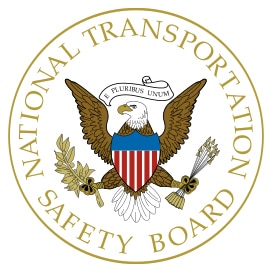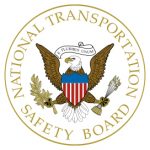
Below are the preliminary findings of the National Transportation Safety Board (NTSB) as published on their website.

When the train derailed, it was on its first regular passenger service trip on a single main track (Lakewood subdivision) at milepost (MP) 19.86. The lead locomotive, the power car, and two passenger railcars derailed onto Interstate 5. Fourteen highway vehicles came into contact with the derailed equipment.
At the time of the accident, 77 passengers, 5 Amtrak employees, and a Talgo Incorporated technician were on the train. Of these individuals, 3 passengers were killed, and 62 passengers and crewmembers were injured. Eight individuals in highway vehicles were also injured. The damage is estimated to be more than $40.4 million.
At the time of the accident, the temperature was 48˚F, the wind was from the south at 9 mph, and the visibility was 10 miles in light rain.
The authorized track speed north of the accident site is 79 mph and decreases to 30 mph at MP 19.8, prior to a curve. A 30-mph speed sign, was posted 2 miles before the curve on the engineer’s side of the track, to remind the operating crews of the upcoming speed restriction. Furthermore, another 30-mph speed sign was on the wayside at the beginning of the curve on the engineer’s side of the locomotive.
The lead locomotive’s event data and video recorders were successfully downloaded and processed in the NTSB’s Video Recorder laboratory in Washington, D.C. An initial review of the final portion of the accident sequence revealed the following information:
- Inward-facing video with audio captured the crew’s actions and their conversations. A forward-facing video with audio captured conditions in front of the locomotive as well as external sounds.
- The crew was not observed to use any personal electronic devices during the timeframe reviewed.
- About 6 seconds prior to the derailment, the engineer made a comment regarding an over speed condition.
- The engineer’s actions were consistent with the application of the locomotive’s brakes just before the recording ended. It did not appear the engineer placed the brake handle in emergency-braking mode.
- The recording ended as the locomotive was tilting and the crew was bracing for impact.
- The final recorded speed of the locomotive was 78 mph.
Positive Train Control (PTC), an advanced train control system mandated by Congress in the Rail Safety Improvement Act of 2008, is designed to prevent train-to-train collisions, overspeed derailments, incursions into established work zone limits, and the movement of a train through a switch left in the wrong position. If a train does not slow for an upcoming speed restriction, PTC will alert the engineer to slow the train. If an appropriate action is not taken, PTC will apply the train brakes before it violates the speed restriction. In this accident, PTC would have notified the engineer of train 501 about the speed reduction for the curve; if the engineer did not take appropriate action to control the train’s speed, PTC would have applied the train brakes to maintain compliance with the speed restriction and to stop the train.
Central Puget Sound Regional Transit Authority (Sound Transit) is a public transit agency in the State of Washington. Sound Transit is the owner of the Point Defiance Bypass tracks. The Washington State Department of Transportation (WSDOT) is the owner of the controlling locomotive, and 11 of the 12 passenger cars. WSDOT contracts with Amtrak to operate the train service. As part of that contract with WSDOT, Amtrak provides the train crews and locomotive maintenance. Sound Transit reported that the PTC system on this line was not operational at the time of the accident. The current Federal Railroad Administration (FRA) deadline for PTC implementation is December 31, 2018.
The 55-year-old engineer had been working for Amtrak since May 2004 and had been promoted to engineer in August 2013. The other crewmember in the cab of the locomotive was a 48-year-old “qualifying” conductor who was being familiarized with the territory. This conductor had been working for Amtrak since June 2010 and had been promoted to conductor in November 2011. As of the date of this report, the NTSB has not yet been able to interview either operating crewmember of the lead locomotive due to their injuries sustained in the accident.
The parties to the investigation include the FRA; Amtrak; Sound Transit; State of Washington Utilities and Transportation Commission; Siemens Industry, Incorporated (manufacturer of the locomotive); the Brotherhood of Locomotive Engineers and Trainmen; and the International Association of Sheet Metal, Air, Rail and Transportation Workers.
The information in this report is preliminary and will be either supplemented or corrected during the course of the investigation.
Related News
- Yardmaster Protection Act Introduced
- PHOTO GALLERY: 2025 Denver Regional Training Seminar
- Fighting for Stronger Heat Protections for Rail Workers
- Regional Training Seminar Sets (Mile-High) Record in Denver
- Registration Open for Anaheim Regional Training Seminar
- Help Promote Rail Crossing Safety on ENS Sign Awareness Day
- Streak of Organizing Wins, Strong Agreements Highlights the SMART-TD Difference
- Sisters Represent TD at Charity Mud Race
- New College Education Benefit Available for SMART-TD Members and Their Families
- Members drive legislative action in New England